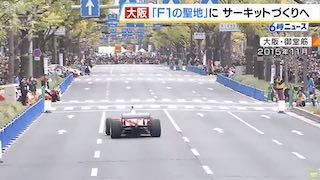Oct 05 (newsonjapan.com) - The J League was founded in 1992, 31 years ago. It might look like a long time, but it pales compared to other leagues like the English Premier League, which was rebranded in the same year but has existed since 1888.
The story is the same for other domestic leagues like Spain’s LaLiga, founded in 1929, and the German Bundesliga, founded in 1963. This backstory is important because it puts the J League’s “growth” into perspective. We should understand the situation and how little time the league has had to develop compared to other football leagues that have become the standard.
While time is one thing, it certainly does not help that homegrown talent is exported to European leagues, developing those leagues at the expense of the J league. On the list of popular sports in Japan, anywhere you check, football is always in the top three, with baseball and sumo wrestling being more popular. The popularity of football among Japanese people indicates that exporting players may have a significant negative impact on the growth of the J League. Its popularity has been declining over the last few years, the same time that more players have been leaving for Europe.
Despite this, there are a growing number of bookmakers for Japanese soccer betting offering odds on both the J League and top European Leagues. It’s thought that Japan’s online gambling industry will have over 11 million users by 2027, and a market volume of over $3.75 billion by the end of 2023. And, despite football not being Japan’s favorite sport, the J League still enjoys decent viewership figures. It’s thought that there are over 7.5 million fans domestically, and 13.9% of people aged between 18 and 79 had watched at least one game during 2022.
More often than not, a domestic league cannot establish itself properly because of a lack of competition. This is not true in the J League, where 10 of the 31 clubs that have competed since its inception have become champions at least once. So, we can rule out lack of competition as a factor holding back the J League’s growth.
Depending on how you look at it, when players leave the J League for Europe, they do more for the J League than if they had stayed. A case study is the remarkable Shinji Kagawa, who currently plays as a midfielder for the J League team Cerezo Osaka, the same club he started his footballing career with. That’s before putting on the shirts of Borussia Dortmund and the Legendary red of Manchester United, the latter with whom he scored 6 times in his first season. You could argue that he played his glory days outside Japan, but you could consider those years “experience gaining” years, the same experience he now shares with his teammates at his present club.
The same experience has influenced younger new talents like Takumi Minamino of AS Monaco (who scored twice and also had one assist in a single game) in the France’s Ligue 1 and Kaoru Mitoma, an explosive winger plowing his trade with Brighton and Hove Albion in the Premier League. Players like these and many others scattered around Europe are all the evidence you need that the J League is indeed growing—it just needs more time.















